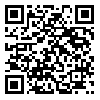Volume 22, Issue 3 (Jul- Aug 2014)
JSSU 2014, 22(3): 1175-1186 |
Back to browse issues page
Download citation:
BibTeX | RIS | EndNote | Medlars | ProCite | Reference Manager | RefWorks
Send citation to:



BibTeX | RIS | EndNote | Medlars | ProCite | Reference Manager | RefWorks
Send citation to:
Basiri A, amoabediny G, Vasei M, Soleimani M. Preparing PCL/PLGA Hybrid Nanofiber Scaffold Capable of Controlled Releasing of Insulin for Cartilage Tissue Engineering Application. JSSU 2014; 22 (3) :1175-1186
URL: http://jssu.ssu.ac.ir/article-1-2552-en.html
URL: http://jssu.ssu.ac.ir/article-1-2552-en.html
Abstract: (9011 Views)
Introduction: Poly lactic co- glycolic acid (PLGA) and poly caprolacton (PCL) are highly applicable polymers in the field of drug delivery and tissue engineering scaffolds. Therefore, this study aimed to design an insulin-loaded PCL/PLGA hybrid nanofiber scaffold in order to be applied in attachment and growth of chondrocytes. Moreover, it can provide a vehicle for the controlled release of active insulin in a certain time period.
Methods: Chondrocyte cells were isolated from septum cartilage tissue utilizing collagenase and were also cultured in monolayer, then the third-passage cells were seeded on the scaffolds. Insulin release from the PCL/PLGA hybrid nanofiber scaffold was examined by Radio Immuno Metric Assay (RIMA) during 22 days. Adherence, distribution and morphology of cells were observed by H&E and alcian blue staining.
Results: PCL/PLGA hybrid nanofiber scaffold revealed a slow and sustain release of insulin within three weeks. Chondrocytes were distributed evenly throughout the scaffolds. In addition, they sank into the pores of scaffold and maintained their rounded morphology.
Conclusion: Biological activity of insulin has been maintained during 22 days of controlled release from hybrid nanofiber PCL/PLGA scaffold. Chondrocytes were distributed evenly throughout the scaffold and revealed a rounded morphology. Therefore, this scaffold provides a suitable carrier for chondrocyte growth as well as formation of tissue engineered cartilage.
Type of Study: Original article |
Subject:
other
Received: 2013/09/15 | Accepted: 2014/02/15 | Published: 2014/08/2
Received: 2013/09/15 | Accepted: 2014/02/15 | Published: 2014/08/2
Send email to the article author
| Rights and permissions | |
 |
This work is licensed under a Creative Commons Attribution-NonCommercial 4.0 International License. |





